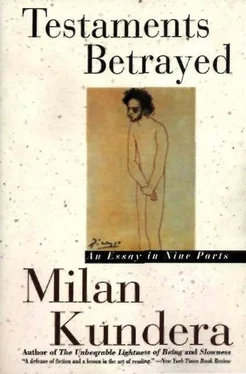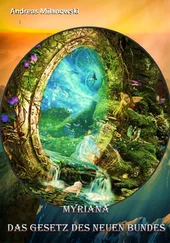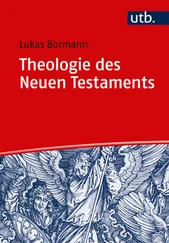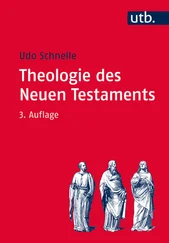This scene with its enormous comic poetry (which should head the list in an anthology of modernism in the novel) would have been unthinkable in the pre-Kafka era. Totally unthinkable. I stress this in order to make clear the full radical nature of Kafka's aesthetic revolution. I recall a conversation, by now twenty years back, with Gabriel Garcia Marquez, who told me: "It was Kafka who showed me that it's possible to write another way. " "Another way" means: breaking
through the plausibility barrier. Not in order to escape the real world (the way the Romantics did) but to apprehend it better.
Because apprehending the real world is part of the definition of the novel: but how to both apprehend it and at the same time engage in an enchanting game of fantasy? How be rigorous in analyzing the world and at the same time be irresponsibly free at playful reveries? How bring these two incompatible purposes together? Kafka managed to solve this enormous puzzle. He cut a breach in the wall of plausibility; the breach through which many others followed him, each in his own way: Fellini, Marquez, Fuentes, Rushdie. And others, others.
To hell with Saint Garta! His castrating shadow has blocked our view of one of the novel's greatest poets of all time.
PART THREE. Improvisation in Homage to Stravinsky
In a 1931 radio lecture, Schoenberg speaks of his masters: " in erster Linie Bach unci Mozart; in zweiter Beethoven, Wagner, Brahms, "-"in the first place, Bach and Mozart; in the second, Beethoven, Wagner, Brahms." In concise, aphoristic remarks, he goes on to specify what he learned from each of these five composers.
Between the Bach reference and the others there is a very great difference: in Mozart, for example, he learns about "the art of unequal phrase lengths" or "the art of creating secondary ideas," that is to say an utterly individual skill that belongs to Mozart alone. In Bach, he discovers principles that had also operated in all the music for centuries before Bach: first, "the art of inventing groups of notes such that they provide their own accompaniment"; and second, "the art of creating the whole from a single kernel"-" die Kunst, alles aus einem zu erzeugen. "
These two sentences summarizing the lesson Schoenberg drew from Bach (and from his predecessors) can be taken to describe the whole twelve-tone revolution: in contrast to Classical music and Romantic music, which are built on the alternation of differing musical themes occurring one after the other, both a Bach fugue and a twelve-tone composition, from beginning to end, develop from a single kernel, which is both melody and accompaniment.
Twenty-three years later, when Roland Manuel asks Stravinsky: "What are your major interests these days?" the latter responds: Guillaume de Machaut, Heinrich Isaak, Dufay, Perotin, and Webern." It is the first time a composer proclaims so firmly the immense importance of the music of the twelfth, the fourteenth, and the fifteenth centuries, and relates it to modern music (to Webern's).
Some years after that, Glenn Gould gives a concert in Moscow for the students of the conservatory; after playing Webern, Schoenberg, and Krenek, he gives his audience a short commentary, saying: "The greatest compliment I can give this music is to say that the principles to be found in it are not new, that they are at least five hundred years old"; then he goes on to play three Bach fugues. It was a carefully considered provocation: socialist realism, then the official doctrine in Russia, was battling modernism in the name of traditional music; Glenn Gould meant to show that the roots of modern music (forbidden in Communist Russia) go much deeper than those of the official music of socialist realism (which was actually nothing but an artificial preservation of romanticism in music).
The history of European music covers about a thousand years (if I take as its beginnings the first experiments in primitive polyphony). The history of the European novel (if I take as its start the works of Rabelais and Cervantes) covers about four centuries. When I consider these two histories, I cannot shake the sense that they developed in rhythms resembling, so to speak, the two halves of a soccer game. The caesuras, or halftime breaks, in the history of music and in that of the novel do not coincide. In the history of music, the break stretches over a big part of the eighteenth century (the symbolic apogee of the first half occurring in Bach's The Art of Fugue, and the start of the second half in the works of the earliest Classical composers); the break in the history of the novel comes a little later: between the eighteenth and the nineteenth centuries-that is, between Laclos and Sterne on the one side and, on the other, Scott and Balzac. This asyn-chronism shows that the deepest causes governing the rhythm of the history of the arts are not sociological or political but aesthetic: bound up with the intrinsic nature of one art or another; as if the art of the novel, for instance, contained two different potentialities (two different ways of being a novel) that could not be worked out at the same time, in parallel, but could be worked out only successively, one after the other.
The metaphor of the two halves of a game came to me some time ago in the course of a conversation with a friend and does not claim to be at all scholarly; it is an ordinary, elementary observation, naively obvious:
when it comes to music and the novel, we are all of us raised in the aesthetic of the second half. A mass by Ockeghem or Bach's The Art of Fugue are for the average music lover as difficult to comprehend as Webern's music. However enchanting their stories, the novels of the eighteenth century intimidate the reader by their form, to the point where they are much better known in movie adaptations (which necessarily denature both their spirit and their form) than through their written texts. The works of the eighteenth century's most famous novelist, Samuel Richardson, cannot be found in bookstores and are practically forgotten. Balzac, on the contrary, even though he may seem old-fashioned, is still easy to read; his form is comprehensible, familiar to the reader, and even more important, it is for that reader the very model of the novel form.
The chasm between the aesthetics of these two halves makes for a multitude of misunderstandings. Vladimir Nabokov, in his book on Cervantes, gives a provocatively negative opinion of Don Quixote: overvalued, naive, repetitive, and full of unbearable and implausible cruelty; that "hideous cruelty" makes this book "one of the most bitter and barbarous ever penned"; poor Sancho, moving along from one drubbing to another, loses all his teeth at least five times. Yes, Nabokov is right: Sancho loses too many teeth, but we are not in the world of Zola, where some cruel act, described precisely and in detail, becomes the accurate document of a social reality; with Cervantes, we are in a world created by the magic spells of the storyteller who invents, who exaggerates, and who is carried away by his fantasies, his excesses; Sancho's
three hundred broken teeth cannot be taken literally, no more than anything else in this novel. "Madame, a steamroller has just run over your daughter!" "Yes, yes, I'm in the bathtub. Slide her to me under the door." Must we bring charges of cruelty against that old Czech joke from my childhood? Cervantes' great founding work was alive with the spirit of the nonseri-ous, a spirit that was later made incomprehensible by the Romantic aesthetic of the second half, by its demand for plausibility.
The second half not only eclipsed the first, it repressed it; the first half has become the bad conscience of the novel and especially of music. Bach's work is the best-known example: Bach's renown during his lifetime; Bach forgotten after his death (forgotten for half a century); the slow rediscovery of Bach over the length of the nineteenth century. Beethoven alone almost succeeded toward the end of his life (that is, seventy years after Bach's death) in integrating Bach's experience into the new aesthetic of music (his repeated efforts to insert fugue into the sonata), whereas after Beethoven, the more the Romantics worshiped Bach, the further they moved away from him in their structural thinking. To make him more accessible they subjectivized and sentimentalized him (Busoni's famous arrangements); then, reacting against that romanticization, came a desire to recover his music as it was played in its own time, which gave rise to some notably insipid performances. It seems to me that, having once passed through the desert of oblivion, Bach's music still keeps its face half veiled.
Читать дальше












